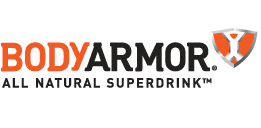 At the intersection of intellectual property, culture and the First Amendment lies the interesting question: Can religious symbols be trademarked under U.S. law?
At the intersection of intellectual property, culture and the First Amendment lies the interesting question: Can religious symbols be trademarked under U.S. law?
In short, the answer is yes.
There is no inherent or statutory bar for a symbol that has acquired religious connotations and spiritual meaning to a group of believers to become protected as a federally registered commercial trademark, provided that certain legal conditions are met.
For example, the mark must be "used in commerce" and become associated with a "single source."
These legal requirements demand that some form of commercial goods or services are offered in connection with the mark by a single entity, either a church, not-for-profit organization or corporation. Therefore, a "generic" religious symbol such as a crucifix would not be protectable because it represents a system of beliefs that is not associated with a single identifiable "source." That is, the Roman Catholic Church could lay a claim to it, but so could Orthodox, Protestant denominations, and thousands of other Christian organizations.

Additionally, even the name of a church or religion can be trademarked. For example, "THE EPISCOPAL CHURCH" is a federally registered trademark for religious instruction services (see right).
In one federal lawsuit testing the bounds of these concepts, the Te-Ta-Ma Truth Foundation-Family (the “Foundation”) sued the World Church of the Creator (the “World Church”), alleging that the World Church infringed its registered trademark for “Church of the Creator.”
There is no inherent or statutory bar for a symbol that has acquired religious connotations and spiritual meaning to a group of believers to become protected as a federally registered commercial trademark, provided that certain legal conditions are met.
For example, the mark must be "used in commerce" and become associated with a "single source."
These legal requirements demand that some form of commercial goods or services are offered in connection with the mark by a single entity, either a church, not-for-profit organization or corporation. Therefore, a "generic" religious symbol such as a crucifix would not be protectable because it represents a system of beliefs that is not associated with a single identifiable "source." That is, the Roman Catholic Church could lay a claim to it, but so could Orthodox, Protestant denominations, and thousands of other Christian organizations.

Additionally, even the name of a church or religion can be trademarked. For example, "THE EPISCOPAL CHURCH" is a federally registered trademark for religious instruction services (see right).
In one federal lawsuit testing the bounds of these concepts, the Te-Ta-Ma Truth Foundation-Family (the “Foundation”) sued the World Church of the Creator (the “World Church”), alleging that the World Church infringed its registered trademark for “Church of the Creator.”
The World Church
was one of three primary divisions of the white supremacist movement. The
mission of the Defendant was twofold: (1) to ensure the survival, expansion
and advancement of the white race and (2) to eliminate Jews, blacks and “mud-
races.” The Foundation, on the other hand, was a denomination professing universal love and respect, and actively included everyone who wished to join. In order words, the beliefs ensconced by the World Church were diametrically opposed to the beliefs practiced by the Foundation and therefore fundamentally incompatible.
On appeal, the Seventh Circuit Court of Appeals held that the World Church infringed the Foundation’s trademark. The court held that the Foundation’s
name did not preclude others from distinguishing themselves and implied that
the name encapsulated the Foundation’s identity: “[U]sing ‘Church of the Creator’ as a denominational name leaves ample options for other sects to distinguish themselves and achieve separate identities.”
The issue affects all organized religions. For example, a Lubavitch Jewish religious group that uses a symbol of the Torah and Hebrew letters on a shield has litigated whether or not this symbol can legitimately function as a trademark. The Trademark Trial and Appeal Board held that it could.
In an article titled "Register Trademarks and Keep the Faith: Trademarks, Religion and Identity," Professor David A. Simon writes about some of the issues confronted when religious organizations wage secular court battles over the unauthorized use of religious trademarks.
Professor Simon notes that such litigation is not a traditional trademark dispute. Such cases are focused on protecting rights to compete in commerce. Here, the dispute is driven by a unique cultural struggle to protect religious identity, but the parties are forced to use the secular litigation system to resolve essentially cultural, "identity" disputes.
He suggests a novel approach to resolving such disputes that is modeled on the Uniform Dispute Resolution Procedure ("UDRP") triggered when there are disputes surrounding the legitimacy of Internet domain names.
In any event, even if permitted under intellectual property law, applying secular trademark concepts to legal disputes involving religious identity and cultural control remains an uneasy fit.

















